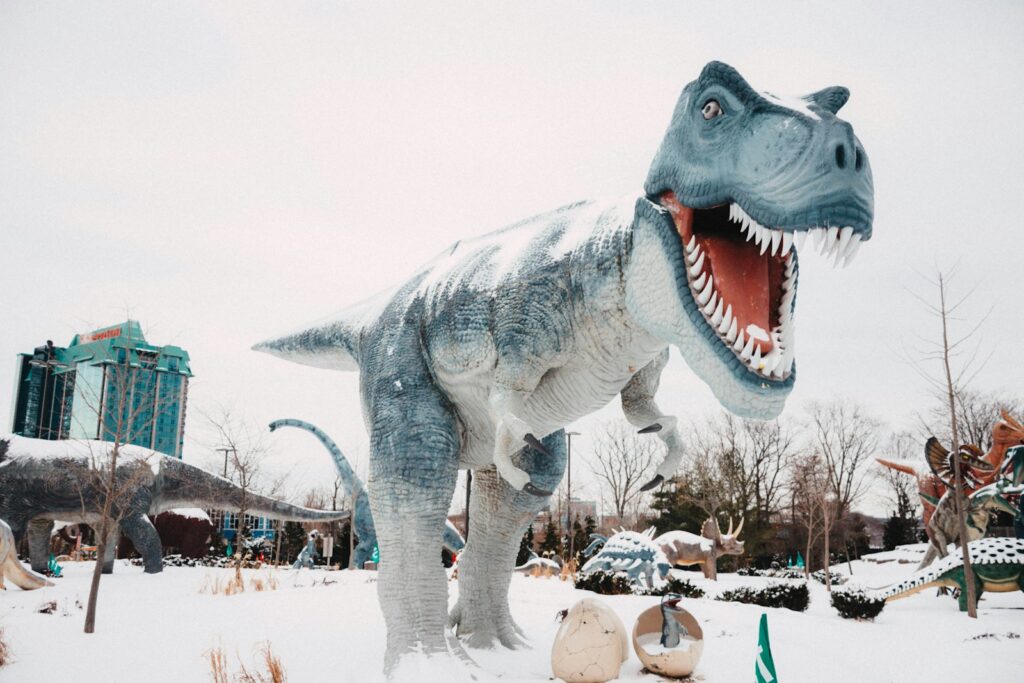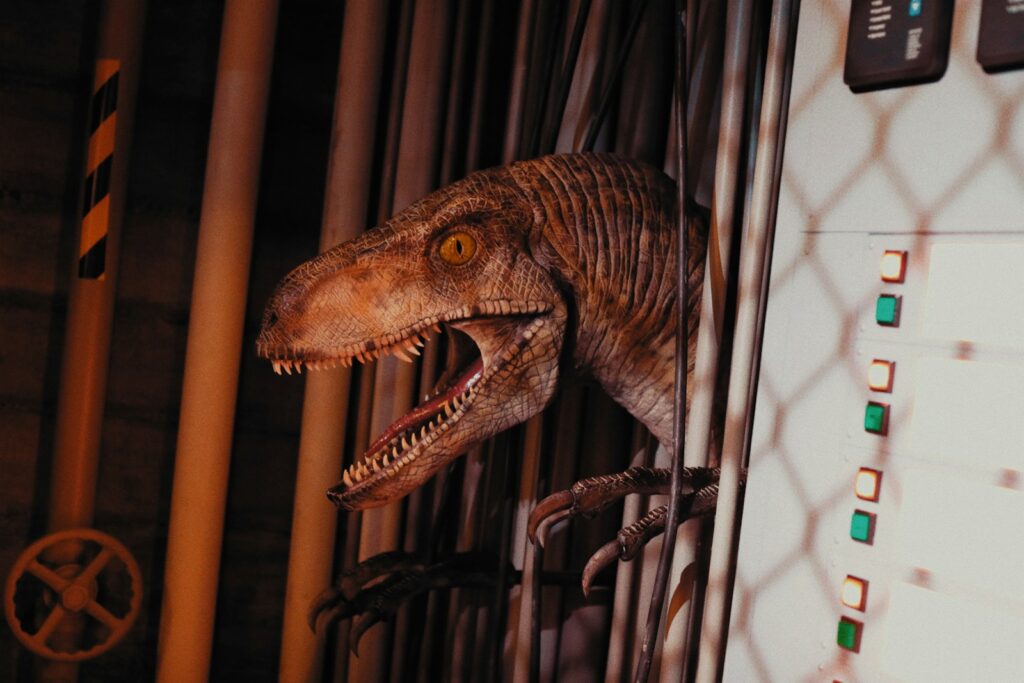The popular image of dinosaurs often places them in lush tropical environments or arid deserts, but evidence shows many dinosaur species thrived in polar regions during the Mesozoic Era. Despite these regions experiencing months of darkness and significantly cooler temperatures than equatorial zones, dinosaurs adapted remarkably well to these challenging conditions. Recent paleontological discoveries in Antarctica, Alaska, Australia (which was much closer to the South Pole during the Mesozoic), and northern Canada have revolutionized our understanding of polar dinosaurs. These findings reveal fascinating adaptations that allowed these incredible animals to survive and even flourish in environments we once thought incompatible with dinosaurian physiology.
Polar Environments During the Mesozoic Era
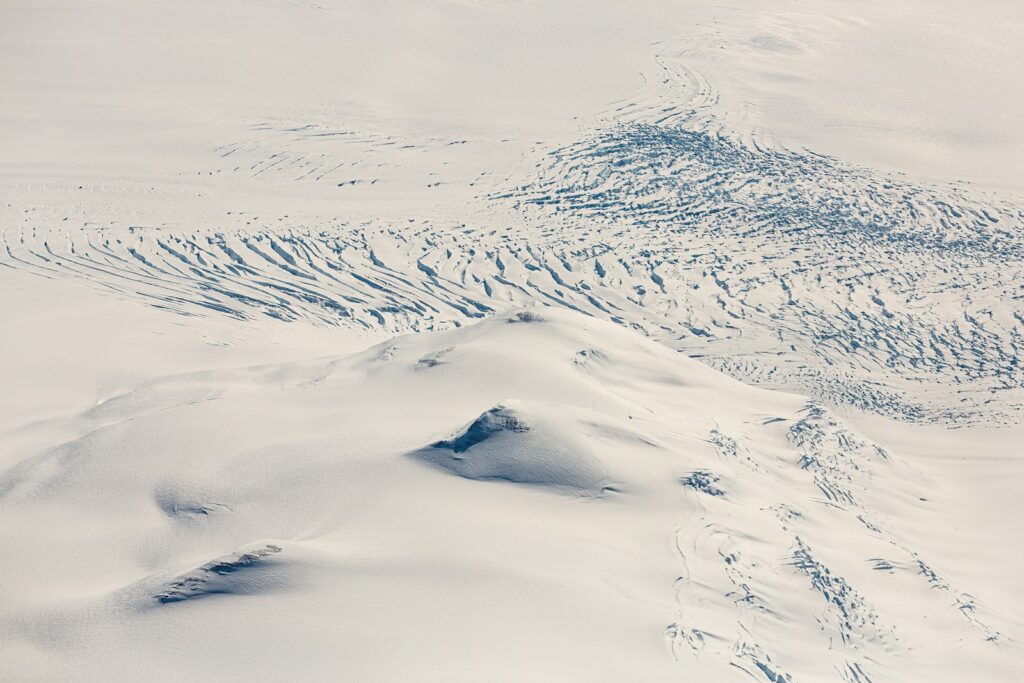
The polar regions during the dinosaur age were significantly different from what we see today. While they experienced seasonal darkness and cooler temperatures than equatorial regions, the Mesozoic Earth was generally warmer than our current climate, with no permanent ice caps at the poles for much of this period. Paleoclimate data suggests that average temperatures in polar regions during the Cretaceous period may have ranged from 0-10°C (32-50°F) annually, compared to the much colder temperatures we see today. The polar forests consisted primarily of conifers, ginkgoes, cycads, and ferns that could withstand the seasonal darkness, creating unique ecosystems. These forests provided food sources for herbivorous dinosaurs, which in turn supported predators, forming complete and complex food webs despite the challenging conditions.
Feathered Insulation: The Key to Polar Survival

One of the most revolutionary discoveries in paleontology has been the confirmation that many dinosaurs possessed feathers, and these structures would have been particularly valuable for polar-dwelling species. Feathers provide excellent insulation, trapping warm air close to the body much like modern down jackets. Paleontologists now believe many polar dinosaurs likely had dense feather coverings, possibly thicker and more developed than their warm-climate relatives. Small theropods like Troodon, whose relatives have been found in Alaska, almost certainly possessed complex feather arrangements that helped them maintain their body temperature during cold polar winters. Evidence from well-preserved fossils shows that some dinosaurs had different types of feathers on different parts of their bodies, suggesting specialized insulation systems that could be particularly advantageous in cold environments.
Size Adaptations for Cold Climates
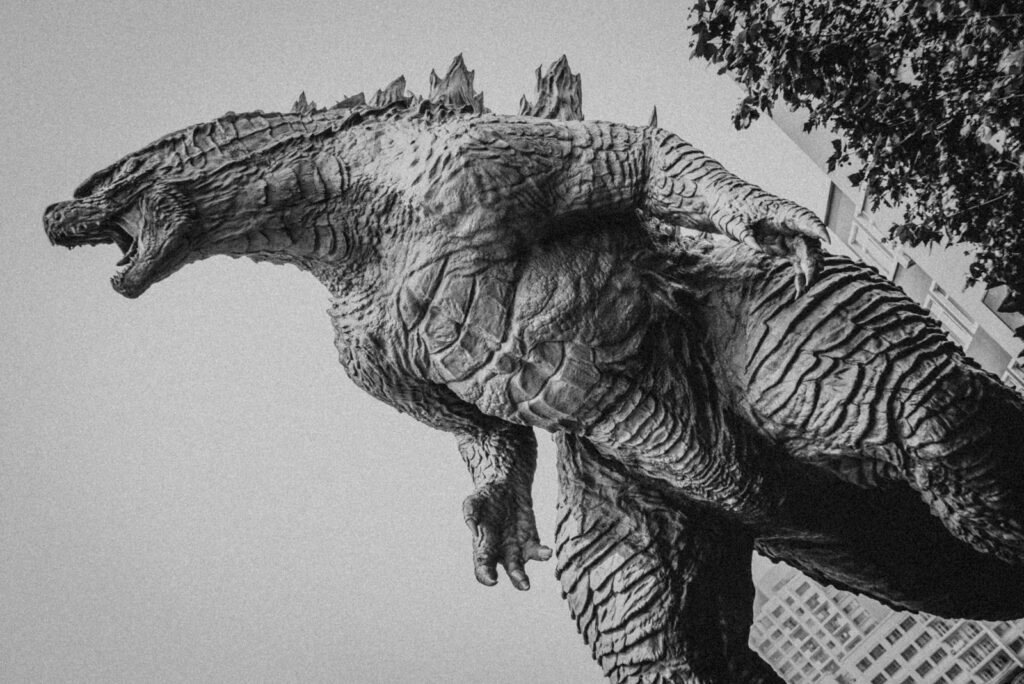
Body size played a crucial role in how dinosaurs adapted to polar environments, with different strategies evident in the fossil record. Some polar dinosaur species appear to have followed Bergmann’s rule—the biological principle that animals tend to be larger in colder environments, as larger bodies retain heat more efficiently due to their lower surface-area-to-volume ratio. Evidence for this comes from certain polar hadrosaur species that seem larger than their lower-latitude relatives. Conversely, some polar dinosaurs appear to have remained relatively small, possibly to reduce their overall energy requirements during resource-scarce winter months. The balance between thermoregulation advantages and metabolic demands likely drove evolutionary pressures in different directions for different dinosaur groups, resulting in varied size adaptations among polar species.
Specialized Vision for Extended Darkness
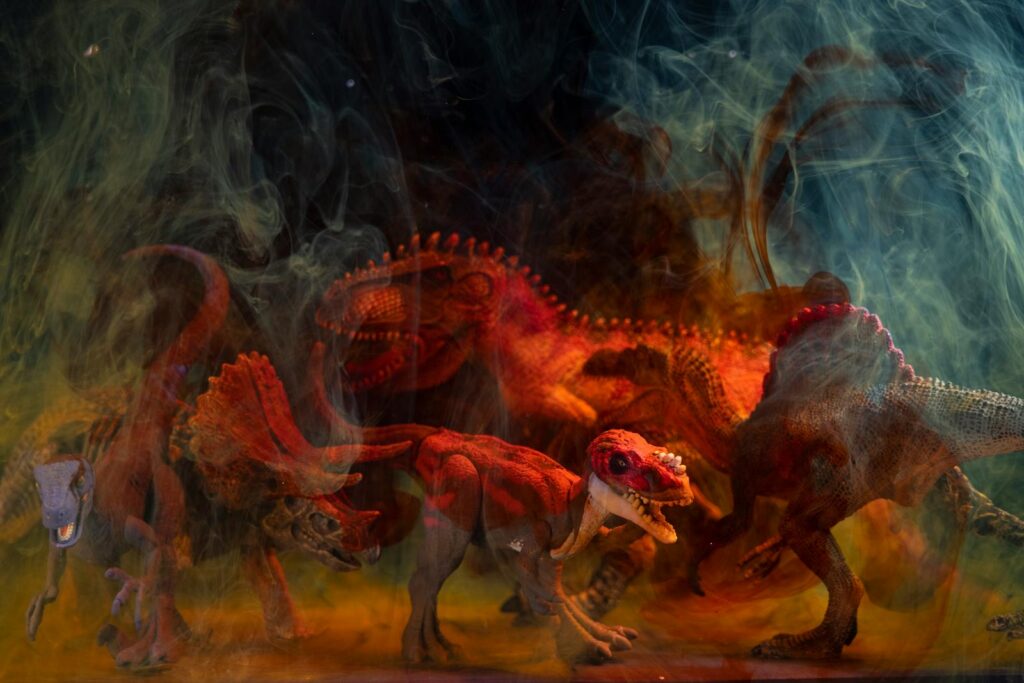
Living in polar regions meant confronting extended periods of darkness during winter months, requiring specialized sensory adaptations. Analysis of skull morphology in polar dinosaurs, particularly specimens of Troodon formosus from Alaska, suggests these animals possessed enlarged optical lobes and eye sockets compared to their lower-latitude relatives. These adaptations would have significantly enhanced their light-gathering capabilities, allowing them to function effectively during the dim polar winters. Modern birds and reptiles that live in regions with seasonal extremes in daylight often develop specialized retinal structures to maximize vision in low-light conditions, and it’s reasonable to infer similar adaptations in polar dinosaurs. Enlarged eyes would have given polar dinosaurs a distinctive appearance compared to their tropical counterparts, with proportionally larger eyes dominating their facial features.
Color Patterns for Polar Environments
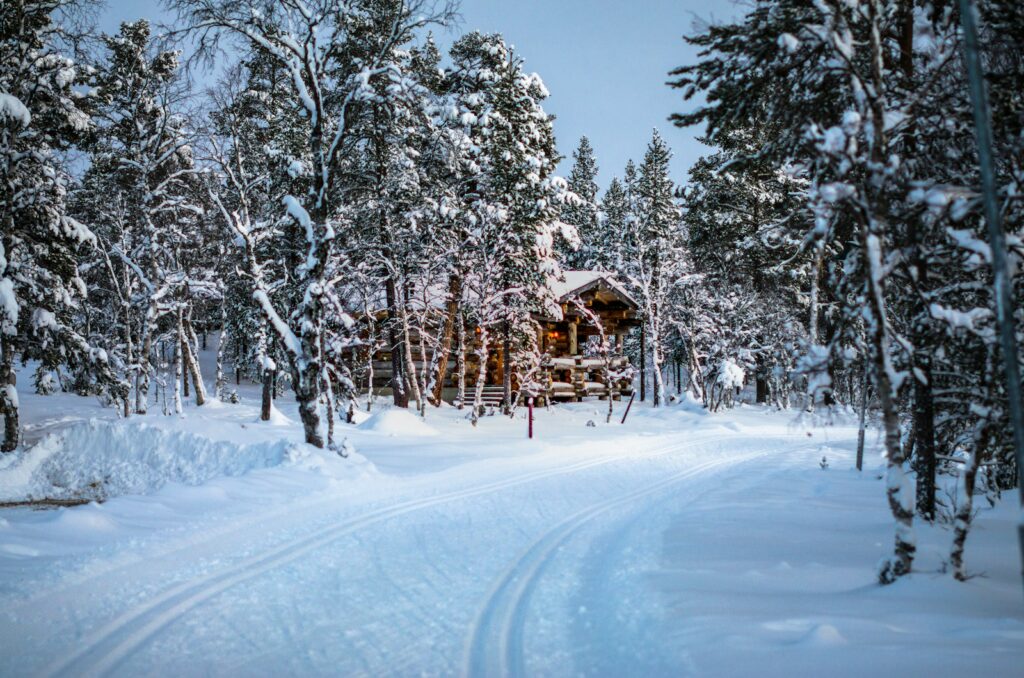
The coloration of polar dinosaurs remains speculative, but evolutionary patterns in modern animals provide compelling clues. Many contemporary polar animals exhibit countershading—dark coloration on their back and lighter undersides—which helps them blend into snowy environments when viewed from above or below. Some polar dinosaurs may have possessed seasonal color changes, developing lighter coats during winter months and darker coloration during summer, similar to modern arctic foxes and hares. Recent advances in determining the color of dinosaurs through fossilized melanin samples have opened new possibilities for understanding polar dinosaur appearance, though specimens from polar regions remain limited. If polar dinosaurs followed patterns seen in modern animals, we might expect many to have displayed white, gray, or mottled patterns that would provide effective camouflage against snow, bare ground, and the dappled light of polar forests.
Nesting Strategies in Polar Regions

The discovery of dinosaur nests in ancient polar regions has revealed fascinating insights into how these animals reproduced in challenging environments. Unlike their tropical counterparts, polar dinosaurs faced the challenge of incubating eggs during potentially frigid conditions. Evidence suggests many polar dinosaurs were colonial nesters, creating vast nesting grounds where the concentration of animals might have created microenvironments of warmer temperatures. Some species likely built specialized nests with insulating materials gathered from polar forests, while others may have partially buried their eggs in soil warmed by decomposing plant matter. Perhaps most intriguingly, some paleontologists theorize that certain polar dinosaurs, particularly among the smaller theropods, may have directly incubated their eggs with body heat, much like modern birds, with parents using their feathered bodies to transfer warmth to their developing offspring.
Migration Patterns of Polar Dinosaurs
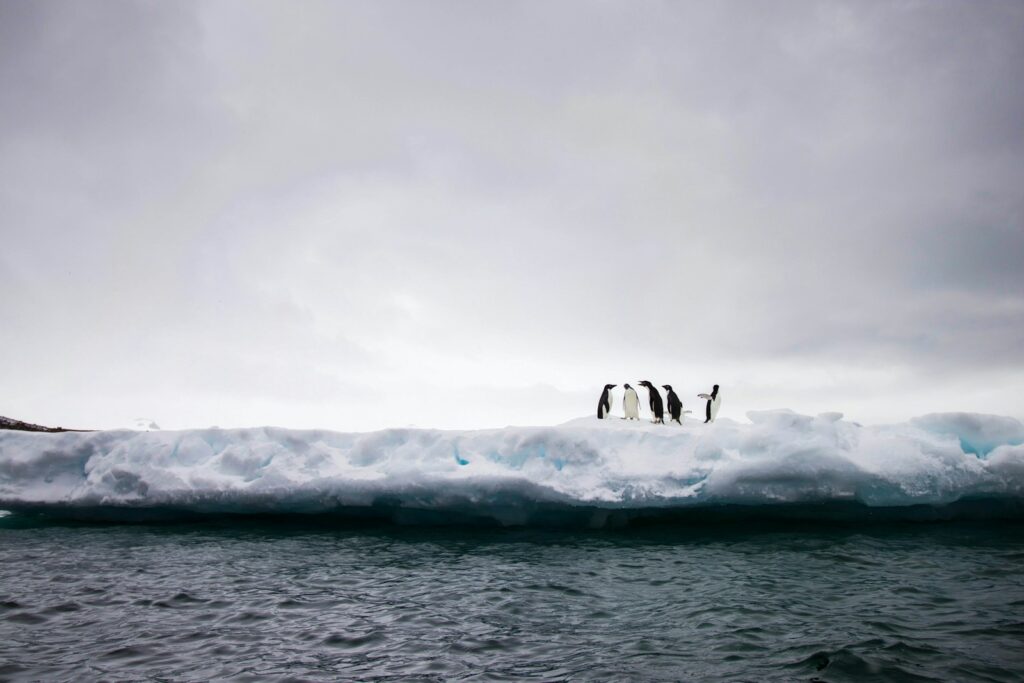
While some dinosaurs were permanent polar residents, evidence suggests others may have undertaken seasonal migrations. Trackway fossils showing directional movement of herds, combined with isotope analysis of teeth that can reveal geographical movement patterns, provide tantalizing hints of migratory behavior. Large herbivores like hadrosaurs might have traveled hundreds of miles annually, moving south during the darker winter months and returning north during summer to take advantage of the abundant vegetation that flourished under 24-hour daylight. These migrations would have created ripple effects throughout the ecosystem, with predators potentially following these herds or developing alternative hunting strategies during lean periods. The energy requirements for such migrations were substantial, suggesting that migratory polar dinosaurs likely possessed high metabolic rates and efficient locomotion to undertake these journeys.
Polar Predators: Specialized Hunters

Predatory dinosaurs in polar regions developed specialized hunting strategies to cope with the unique environmental challenges. Fossil evidence from Alaska and Antarctica shows that polar theropods often had proportionally larger brains than their equatorial counterparts, suggesting enhanced cognitive abilities that may have helped them develop complex hunting strategies necessary for surviving seasonal resource scarcity. Some polar predators likely developed keen night vision and possibly enhanced olfactory capabilities to locate prey during the extended dark periods. Tyrannosaurs and dromaeosaurs (raptor dinosaurs) found in polar regions show evidence of these adaptations, with enlarged olfactory bulbs visible in some well-preserved skull specimens. The hunting patterns of these animals may have shifted seasonally, with different prey preferences and hunting techniques employed during the contrasting light conditions of polar summers and winters.
Plant-Eaters’ Cold-Weather Adaptations

Herbivorous dinosaurs faced particular challenges in polar environments, where plant growth was highly seasonal and nutritional content varied dramatically throughout the year. Dental wear patterns in polar hadrosaurs (duck-billed dinosaurs) suggest specialized feeding behaviors, possibly including the consumption of tougher, woodier plant materials during winter months when fresh growth was unavailable. Some polar herbivores likely developed specialized digestive systems that could extract maximum nutrition from lower-quality plant material, similar to modern arctic herbivores like muskoxen and reindeer. Ceratopsians (horned dinosaurs) found in polar regions show evidence of powerful jaw muscles and highly efficient teeth that could process tough vegetation effectively. These adaptations would have given polar herbivores distinctive appearances, with potentially more robust jaw structures and specialized dental batteries compared to their tropical relatives.
Growth Rates and Hibernation Possibilities

Analysis of bone microstructure in polar dinosaur fossils reveals fascinating details about their growth patterns and potential seasonal strategies. Growth rings in bones, similar to tree rings, suggest many polar dinosaurs experienced seasonal growth, with rapid development during resource-abundant summers and significantly slowed growth during winters. Some paleontologists have proposed that certain polar dinosaurs may have entered torpor—a state of decreased physiological activity—during the darkest winter months, though this remains controversial. Smaller dinosaur species would have benefited most from such energy-conserving strategies, while larger species could rely more on their thermal inertia and fat reserves. Recent studies of bone histology in polar dinosaurs have shown evidence of vascular changes that might support the hibernation hypothesis, though conclusive proof remains elusive.
The Leaellynasaura: A True Polar Specialist

Perhaps no dinosaur better exemplifies polar specialization than Leaellynasaura amicagraphica, a small ornithopod from Early Cretaceous Australia when the continent lay well within the Antarctic Circle. This remarkable dinosaur possessed extraordinarily large eyes relative to its skull size, almost certainly an adaptation for vision during the prolonged winter darkness. Measuring only about 2-3 meters in length, Leaellynasaura had a proportionally long tail that contained more vertebrae than typical for dinosaurs of its size, possibly serving as an additional fat storage location to help survive winter food scarcity. Analysis of its bones shows unusually continuous growth patterns, suggesting it remained active year-round rather than entering a dormant state during winter. Leaellynasaura’s small size, enhanced visual capabilities, and unique tail structure would have given it a distinctive appearance compared to related species from warmer climates, representing a truly specialized polar dinosaur form.
Modern Analogues: Arctic and Antarctic Animals Today

While no large reptiles inhabit polar regions today, examining modern polar animals provides valuable insights into how dinosaurs might have appeared and adapted. Modern polar birds like penguins and puffins demonstrate how endothermic animals can thrive in cold environments through adaptations including dense, waterproof feathering, substantial fat layers, and specialized circulation systems that prevent heat loss through extremities. Mammals like polar bears and arctic foxes show how seasonal color changes and dense insulation can be effective survival strategies in snowy environments. The caribou’s annual migration pattern may parallel behaviors of certain polar dinosaur herds, while the capacity of some arctic frogs and insects to produce natural antifreeze compounds hints at physiological adaptations that might have been available to polar dinosaurs. By synthesizing evidence from these modern examples with the fossil record, paleontologists can create increasingly accurate reconstructions of polar dinosaurs.
Ongoing Discoveries Reshaping Our Understanding

Paleontological work in polar regions continues to yield groundbreaking discoveries that transform our understanding of dinosaur adaptations. Recent expeditions to Antarctica have uncovered new specimens that challenge previous assumptions about dinosaur diversity at high latitudes, revealing a complex ecosystem with multiple specialized species. Advanced analytical techniques, including CT scanning and geochemical analysis, are providing unprecedented insights into the biology and behavior of these animals. Ongoing work in northern Alaska, the Canadian Arctic, and parts of Russia continues to expand our knowledge of northern polar dinosaur communities, while southern polar discoveries in Australia, New Zealand, and Antarctica complement this picture from the opposite hemisphere. Each new finding adds detail to our reconstruction of these remarkable animals, gradually building a more complete picture of dinosaurs that thrived in environments once thought too challenging for reptilian life.
Conclusion

The image of dinosaurs as solely tropical or temperate creatures has been thoroughly dismantled by polar discoveries over the past few decades. These remarkable animals thrived in environments with extended darkness and cold temperatures through a suite of specialized adaptations including insulating feathers, enhanced sensory capabilities, and seasonal behavioral strategies. Rather than the uniform, scaly creatures often depicted in older reconstructions, polar dinosaurs were likely diverse in appearance, with many sporting dense feathering, specialized body proportions, and possibly seasonal color changes. As research continues in these challenging but fossil-rich regions, our understanding of polar dinosaurs becomes increasingly sophisticated, revealing them as highly adapted specialists rather than marginal populations. These discoveries not only expand our knowledge of dinosaur diversity but also provide valuable insights into how animals adapt to extreme environments—lessons that remain relevant in our changing world today.

